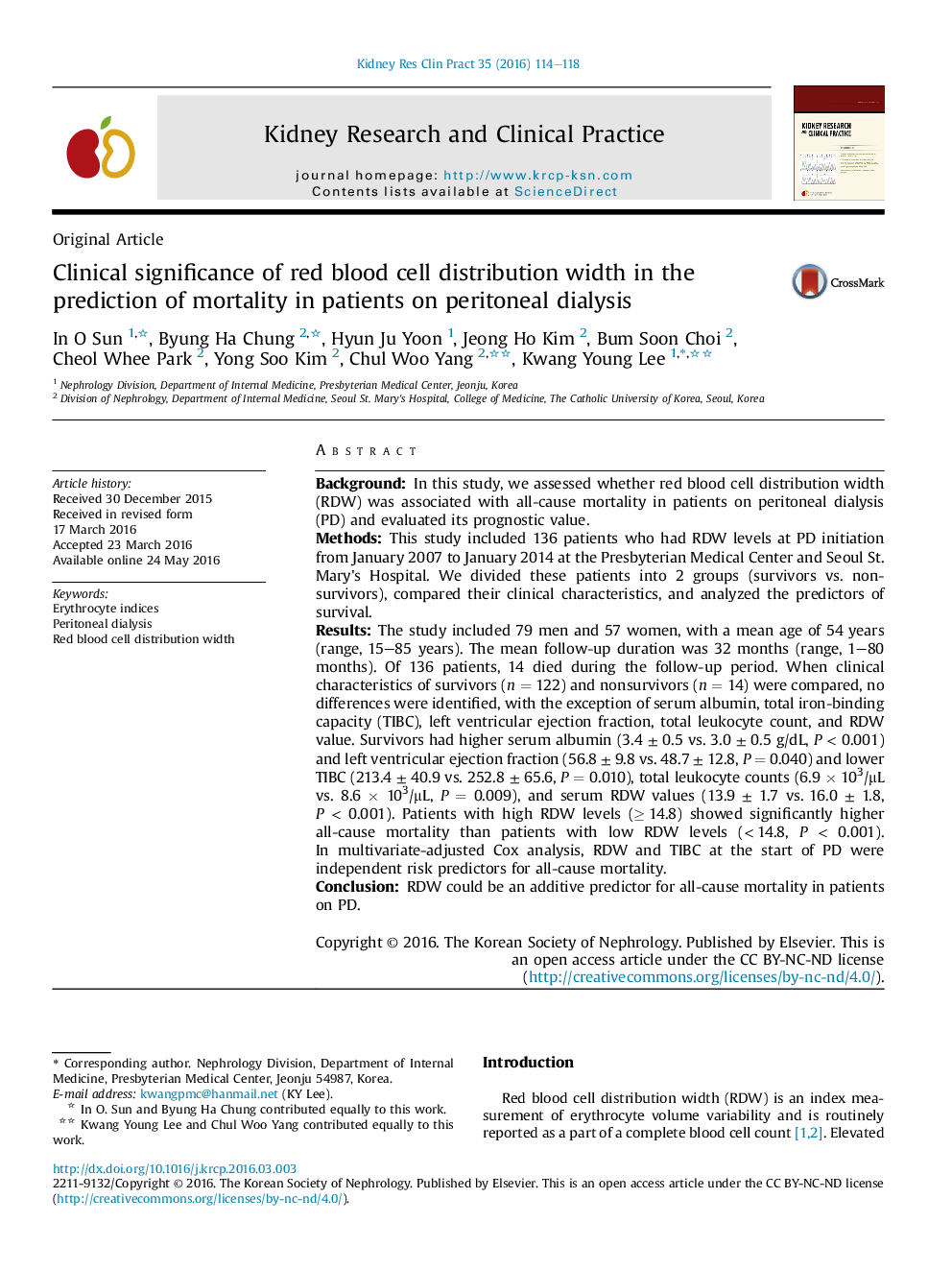| کد مقاله | کد نشریه | سال انتشار | مقاله انگلیسی | نسخه تمام متن |
|---|---|---|---|---|
| 3891643 | 1250050 | 2016 | 5 صفحه PDF | دانلود رایگان |
BackgroundIn this study, we assessed whether red blood cell distribution width (RDW) was associated with all-cause mortality in patients on peritoneal dialysis (PD) and evaluated its prognostic value.MethodsThis study included 136 patients who had RDW levels at PD initiation from January 2007 to January 2014 at the Presbyterian Medical Center and Seoul St. Mary's Hospital. We divided these patients into 2 groups (survivors vs. nonsurvivors), compared their clinical characteristics, and analyzed the predictors of survival.ResultsThe study included 79 men and 57 women, with a mean age of 54 years (range, 15–85 years). The mean follow-up duration was 32 months (range, 1–80 months). Of 136 patients, 14 died during the follow-up period. When clinical characteristics of survivors (n = 122) and nonsurvivors (n = 14) were compared, no differences were identified, with the exception of serum albumin, total iron-binding capacity (TIBC), left ventricular ejection fraction, total leukocyte count, and RDW value. Survivors had higher serum albumin (3.4 ± 0.5 vs. 3.0 ± 0.5 g/dL, P < 0.001) and left ventricular ejection fraction (56.8 ± 9.8 vs. 48.7 ± 12.8, P = 0.040) and lower TIBC (213.4 ± 40.9 vs. 252.8 ± 65.6, P = 0.010), total leukocyte counts (6.9 × 103/μL vs. 8.6 × 103/μL, P = 0.009), and serum RDW values (13.9 ± 1.7 vs. 16.0 ± 1.8, P < 0.001). Patients with high RDW levels (≥ 14.8) showed significantly higher all-cause mortality than patients with low RDW levels (< 14.8, P < 0.001). In multivariate-adjusted Cox analysis, RDW and TIBC at the start of PD were independent risk predictors for all-cause mortality.ConclusionRDW could be an additive predictor for all-cause mortality in patients on PD.
Journal: Kidney Research and Clinical Practice - Volume 35, Issue 2, June 2016, Pages 114–118
